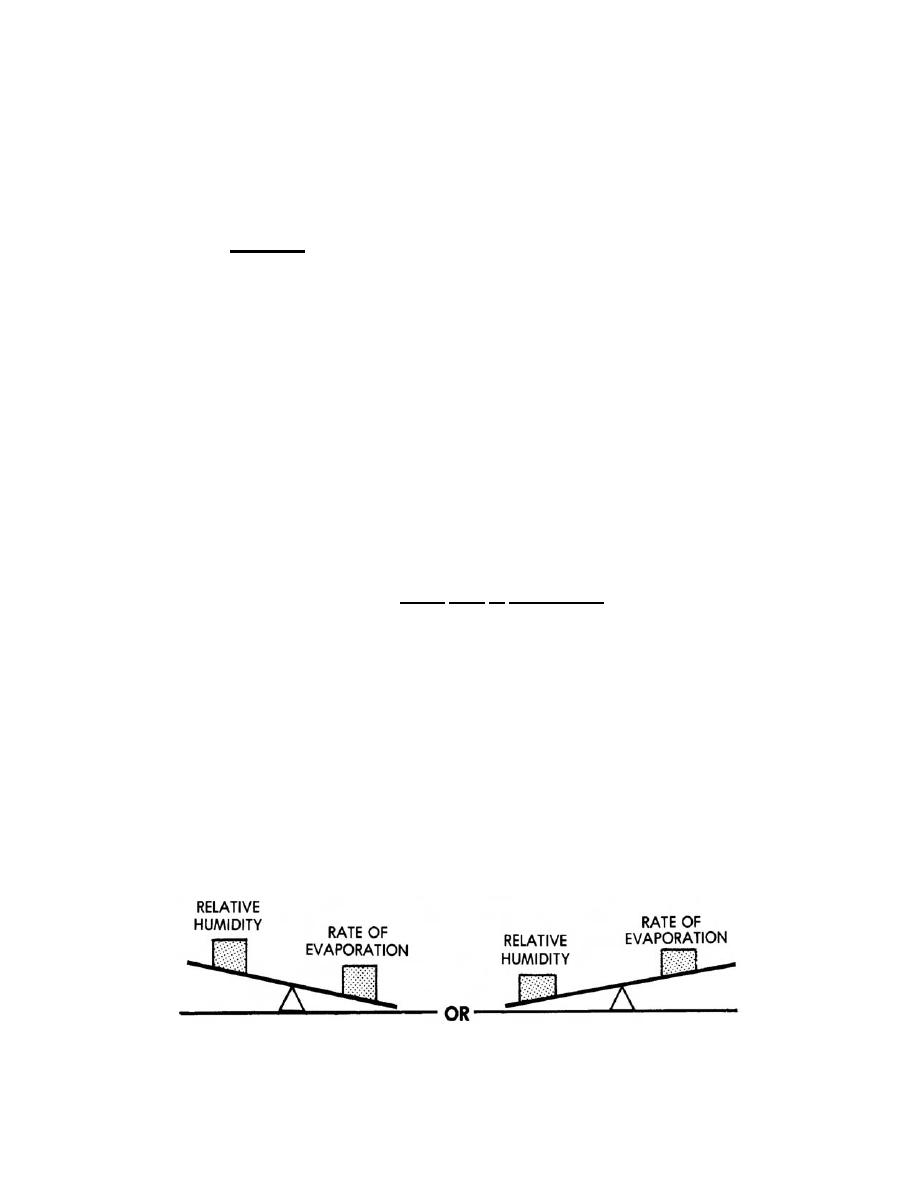
(a) Vasodilation. Heat causes the blood vessels to dilate or expand, a
process called vasodilation.
(b) Increased blood flow. Expanded blood vessels allow an increased
blood flow which increases heat loss from the body. The individual becomes cooler.
(2) Cold skin. Impulses transmitted by the sympathetic nervous system
slow down the body's organs. In the case of cold skin, blood vessels have constricted
causing a decreased blood flow. The decreased blood flow means that less body heat
is lost to the environment, and the skin is cold.
Section III. HEAT TRANSFERENCE MECHANISMS
4-9.
INTRODUCTION
The oxidation of the foods we eat produces body heat. The temperature of a
person's body would rise and keep on rising if there was not a way to remove this body
heat. The main ways of losing body heat are evaporation, radiation, conduction, and
4-10. EVAPORATION
Evaporation is the changing of a liquid to a vapor. Water must be heated to a
high temperature to evaporate. The latent heat of evaporation is the amount of heat
necessary to evaporate one gallon of water at 30C (86F). Because water has a high
latent heat of evaporation, every gram of water evaporating from the skin takes with it a
great deal of heat--about 0.58 calories/gram of water. The evaporation of only 150 ml of
water per hour is enough to remove all the heat produced by the body under normal
conditions.
a. Under extreme conditions, about four liters (one gallon) of perspiration is
produced each hour, and this volume can remove about 2,000 calories of heat from the
body. This is approximately 32 times the normal level of heat production.
b. The rate of evaporation varies according to the relative humidity in the air.
THE HIGHER THE RELATIVE HUMIDITY, THE LOWER THE RATE OF
EVAPORATION.
Figure 4-1. Rate of evaporation.
MD0587
4-5


 Previous Page
Previous Page
